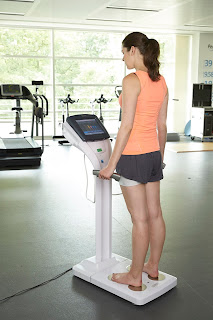A Public Health England survey says 7/10 adults are motivated to make healthier choices in 2021. There is a massive opportunity for the fitness industry to support, motivate, and educate the public. We just need to stop trying to persuade them to join the gym or an exercise class.
6 Million adults aged 40-60 plan to:
- exercise more (41%)
- eat more healthily (40%)
- lose weight (39%)
Only 15% of people are interested in a gym membership. This figure is not going to double because of the pandemic.
But if we say our existing members are in the 70% who want to be healthier, then 55% of the population are unsupported.
1 in 2 adults are not a member of a club but want to make healthier choices.
The solution is two-fold: education and not selling in-club exercise. Health memberships will be a key factor in saving the fitness industry, but also improving the health of the nation. They will boost a club’s reach, revenue and retention.
You can find out lots more at our Health Seeker Memberships Webinar on 4th March
Health Memberships
Several fitness chains run a health-check, or health MOT as part of their membership. This ranges from basic height and weight measurement through to blood pressure and pin-prick tests. The ones I have personally tried over the last 10 years have been professionally delivered, but are undersold (especially to members), and not followed-up.
Lots of clubs have Biometric Impedance Analysis (BIA) devices or Body Composition monitors, aka “body-fat scales”. The “body-fat” label needs to be dropped, as it can be off-putting, especially to the deconditioned (new member, non-member). The devices measure so much more than fat (body fat percentage, mass, visceral, etc), and are not just for the professional athlete, or medical professional. This is something that Tanita and InBody are working hard at through their education programmes.
Again, these devices are underused and undersold. They were perhaps installed to help with exercise referral, or as a retention tool. They should be a key cog in the retention process, as important as the induction or programme review. But they are also a way of reaching new members… the health seekers, who will likely never join the gym.
Health memberships are being sold by clubs today, to members, and also to ex-members and non-members. A health member will visit once a month for a half-hour consultation, have their measurements taken and explained, then discuss their health, goals, exercise, nutrition, or general lifestyle. Then they book their next appointment.
Education
One of the keys to the success is education, both for the club and the member.
You need at least one or two (or more) champion staff members who totally understand the process and equipment. All other staff, from cleaners and lifeguards, to chief execs and business owners need to have their measurements taken and understood.While a handful of members may understand their stats, it is important to always sell the health-check as a consultation, as the value is in explaining the readings to the member. For example, Metabolic Age can be quite scary, but knowing how to improve it will get people on the right track and bring them back.
The follow-up appointment is critical to success of the programme, as is putting a value on the appointment. We all know that free is a four-letter word… even if you’re offering health-checks to all ex-members, make it limited (e.g. first 40 people, first weekend of the month), and explain that you’ll cover the cost (e.g. £25 for a one-off).
Don’t sell the gym
As explained above, 1 in 2 health seekers will not want to join the gym. They don’t want to get on a treadmill, pick up a kettlebell, or climb onto a spin bike. So, don’t even mention it, there’s really no point.
Listen to them talk about their lifestyle, activity, nutrition and health. Offer advice or coach them about their goals, if you are qualified or inclined to do so. Talk to them about being active outside the club, walking their dog, or drinking more water. But don’t even think about suggesting they join the gym.
This is the paradigm shift I believe that the fitness industry needs to make. We need to understand that we will not push gym participation (in-club exercise) much beyond 15%. There are massive opportunities out there, especially with health seekers, and if we support, motivate, and educate them, there’s no reason why they shouldn’t be our members. We just need to forget about the gym, and talk about activity rather than exercise.
Thank you if you have read this far, but this is the tip of the iceberg. We could talk more about referral, social prescribing, the links between physical and mental health, behaviour change, nudges and attitudes to activity vs exercise. Also important is positioning in the club (consultation room vs gym floor), using these memberships as a retention and recovery tool, corporate outreach, and ancillary services (aka secondary spend, but in a whole new area).
I'd love to hear your thoughts, experiences or how you are working on health memberships - please comment below, or contact me directly.
Learn how clubs are increasing their reach, revenue and retention at our Health Seeker Memberships Webinar on Thursday 4th March at 1pm.
I’ll be joined by Simon Wilkinson, an Accredited Strength and Conditioning Coach, and an expert in Body Composition, to discuss education and positioning of these memberships. We will talk through examples of how clubs are already selling body composition and other related services.



No comments:
Post a Comment